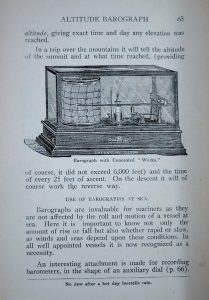This year’s winter was cold. There was heavy snowfall across the UK, Europe and parts of the United States including Texas. This severe weather came with significant societal and economic impacts.
Every time cold extremes like this occur, one can almost predict the media headlines. On the one hand, dubious media will use a regional cold snap to sow doubt about human-made global warming by deliberately misunderstanding the difference between weather and climate. In a similarly absurd manner, other newspapers will state that climate change was responsible for the cold snap. In between, there are debates among scientists about the role of climate change in causing cold extremes. This is where it gets complicated and, hence, interesting.
Climate change manifests itself in different ways. While the increase of CO2 in the atmosphere leads to warmer temperatures globally, there might be indirect mechanisms causing opposite effects regionally. In recent years, researchers have hypothesised that the melting of Arctic sea ice – a direct result of global warming – favours winter cold extremes in the Northern Hemisphere mid-latitudes. In particular, it has been suggested that the decline in Barents and Kara sea ice weakens the stratospheric polar vortex, a band of fast blowing westerly winds circling the Arctic during winter at approximately 15-50 km altitude. Weak phases of the vortex are linked to cold winter weather in Eurasia and North America. In other words, it was proposed that climate change indirectly leads to colder weather. The polar vortex this year was extremely weak, and therefore likely to be the culprit of the cold weather. But are Arctic changes also making these weak vortex phases more likely?

Figure 1: Schematic overview of the different plausible causal mechanisms making it difficult to quantify the influence of autumn Barents and Kara sea ice concentrations (BK-SIC) on the winter stratospheric polar vortex (SPV); sea level pressure over the Ural Mountains (Ural-SLP) and over the North Pacific (NP-SLP), lower-stratospheric poleward eddy heat flux (vT), North Pacific sea ice concentrations (NP-SIC) and El Niño–Southern Oscillation/Madden–Julian Oscillation (ENSO/MJO). The arrows represent assumed causal relationships. (Taken from Kretschmer et al, 2020)
The scientific debate regarding a causal role of Arctic sea ice loss is controversial (see e.g. Cohen et al. 2020, Screen et al. 2018). Scientists face a dilemma. In observational data, a statistically significant signal has been detected. Given the large natural variations in climate data and different possible mechanisms which are difficult to disentangle, it is hard to tell if this signal reflects a causal influence (see also Fig. 1). This is further compounded by partly opposing results from climate model simulations. So far all that can be said conclusively, is that the question of whether the decline of Arctic sea ice is causing a weakening of the polar vortex cannot be answered conclusively.
But should we ignore the potential risk the decline of the Arctic holds for our future weather and climate, just because the current data do not allow a clear statement? The short answer is: No!
We explore this aspect in our latest study (see Kretschmer et al. 2020). In contrast to previous studies, which examined whether the decrease in sea ice causes a weakening of the polar vortex (and thus severe winter weather), we pose a different question. We ask: Assuming there is a causal influence of sea ice loss, what does this imply?
To address this question we use different climate model simulations of the next 100 years. All climate projections agree that sea ice will continue to melt as climate change progresses. This is a sad but unsurprising fact highlighting the need to evaluate possible consequences of a changing Arctic. Based on the model simulation data and using methods from causal inference, we further conclude that the causal effect of Arctic sea ice on the polar vortex is, if it exists, plausibly only very small. However, given that the decrease of sea ice will be huge, this small effect can have large implications. In fact, the climate models project a weakening of the polar vortex as long as the autumn sea ice in the Barents and Kara Sea melts. Whilst this is no definitive proof for a causal influence of sea ice loss, it is consistent with the initial hypothesis. Moreover, we find that once all sea ice is gone, the vortex strengthens again, suggesting there are other, poorly understood mechanisms by which global warming affects the polar vortex and thereby our weather in the mid-latitudes.
More generally, our study calls for more focus on understanding plausible climate-change related risks. Absolute statements about the regional effects of global warming are often not possible, given the complexity of the climate system and often contradictory climate predictions. This forces decision makers to act under large uncertainties. It is therefore necessary for climate scientists to evaluate different causal possibilities (such as an influence of the sea ice loss on the polar vortex) to gain a better understanding of regional climate risks. This also requires the use of different statistical tools and techniques – some of which we apply and discuss in our study.
The next time a cold snap hits Europe the same oversimplistic media headlines can be expected. Hopefully, however, the scientific debate will then have shifted towards a more conditional risk-based understanding of the plausible impacts of the changing Arctic.






 Figure 1:
Figure 1:  Figure 2:
Figure 2:  Figure 3: The Pacific and Atlantic Oceans
Figure 3: The Pacific and Atlantic Oceans Figure 4:
Figure 4: 












